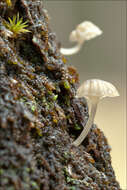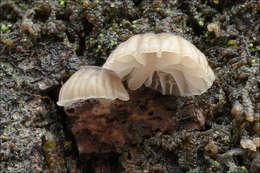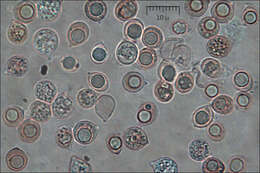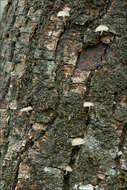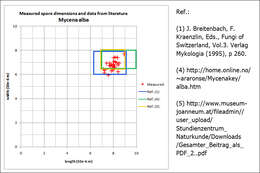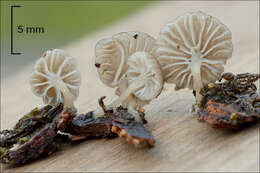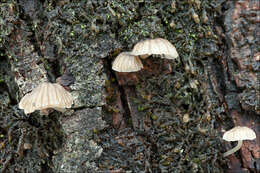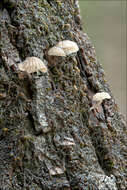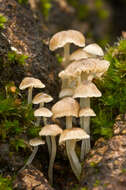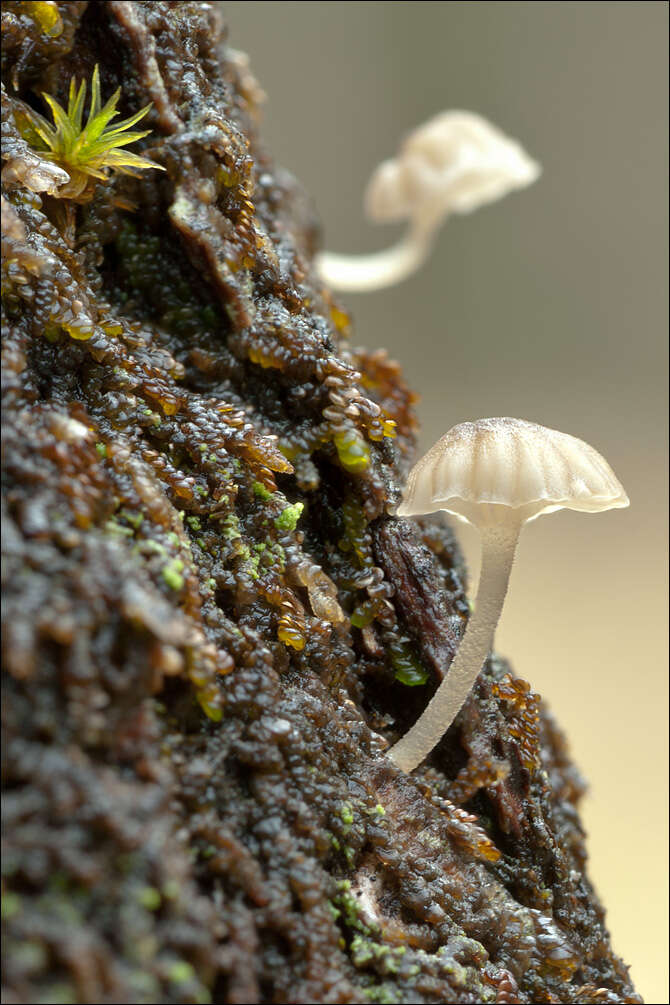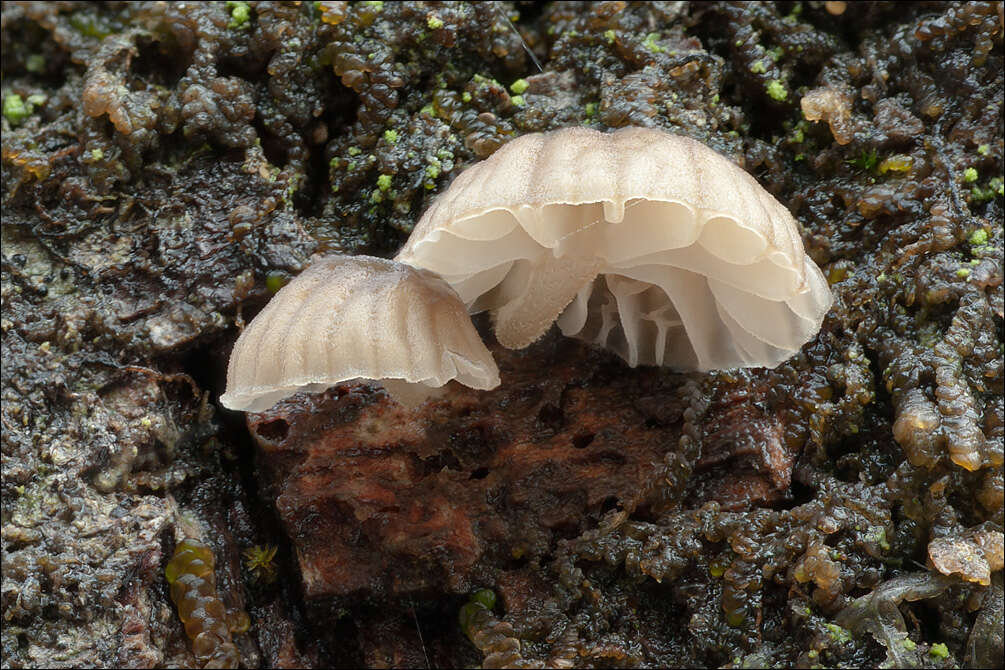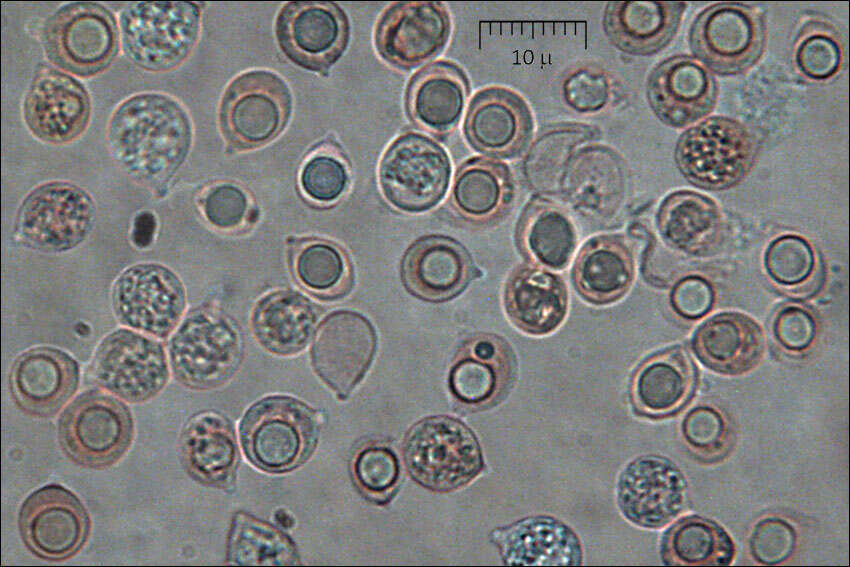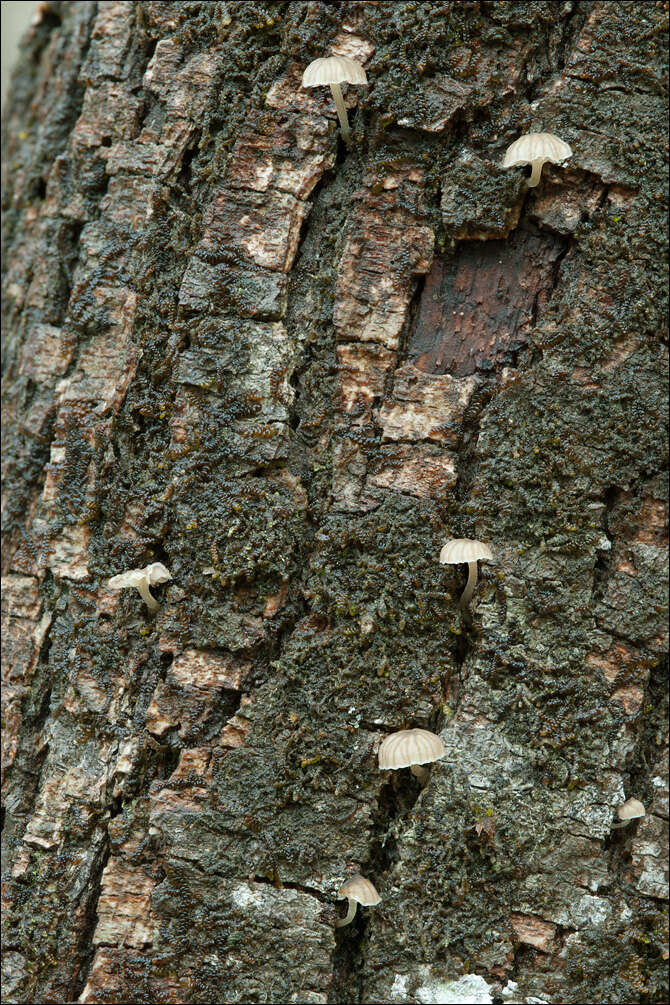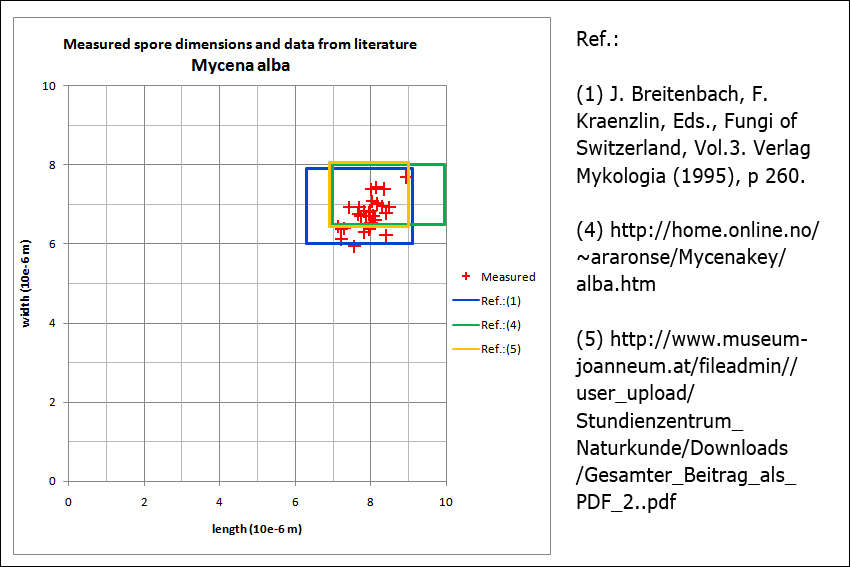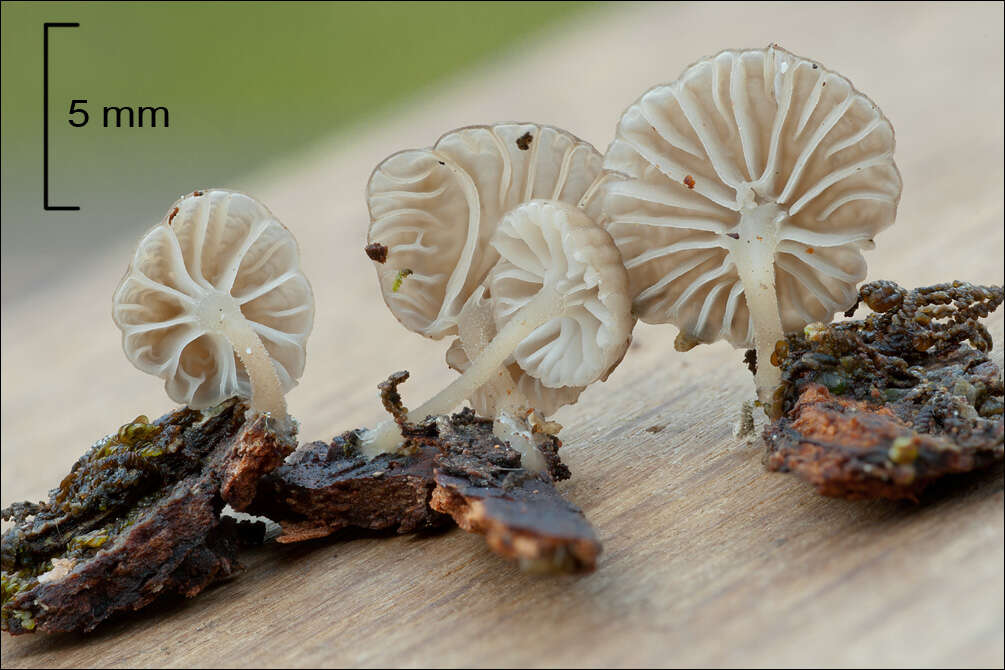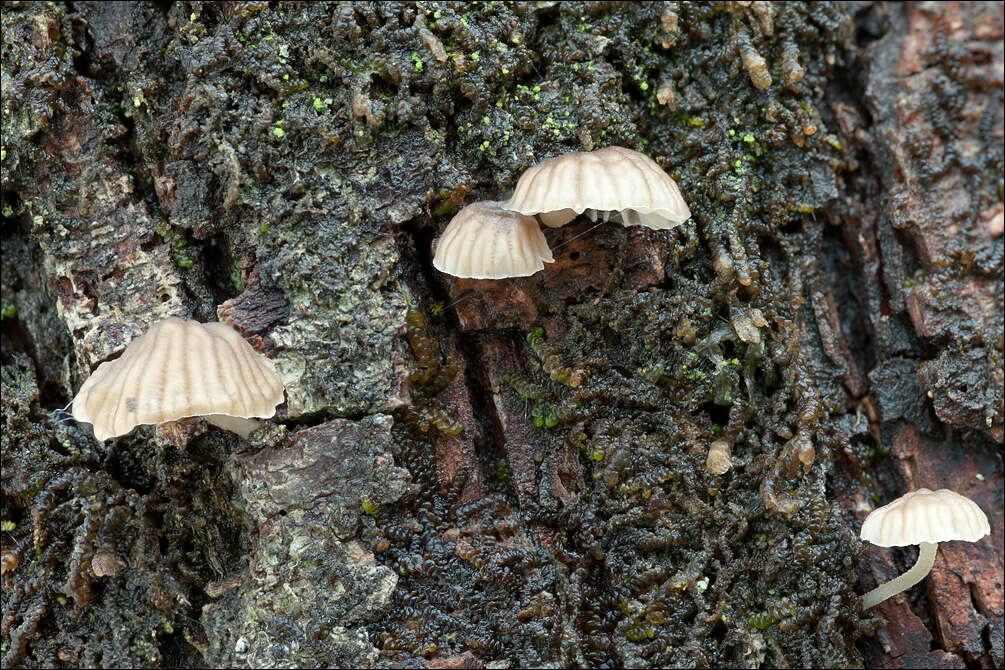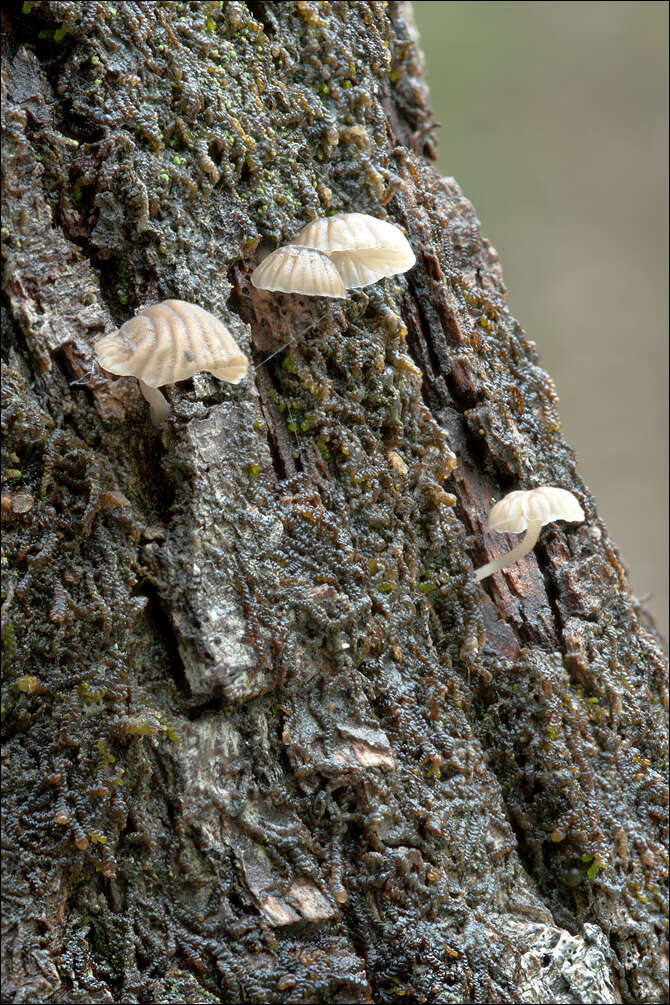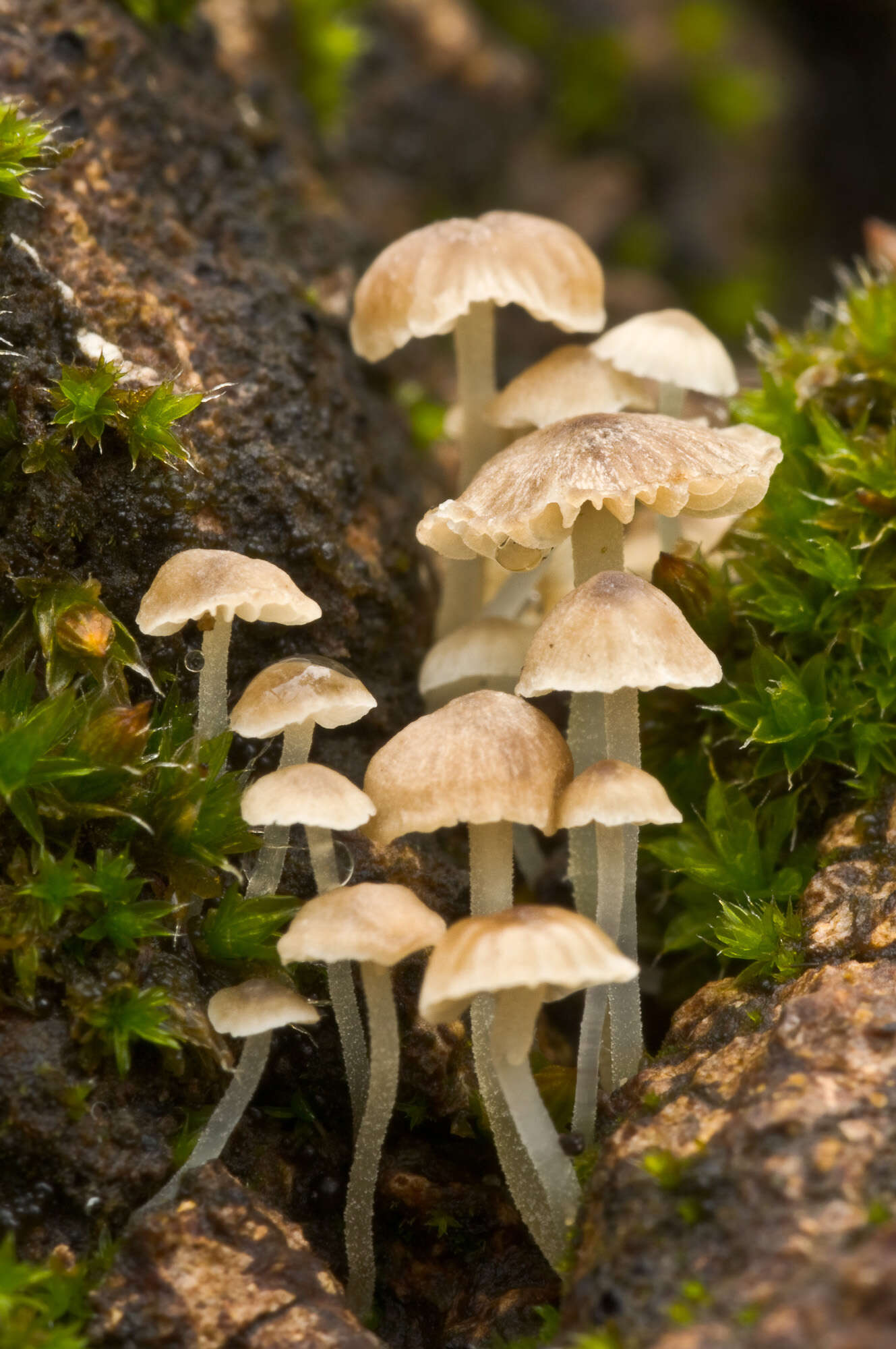Mycena alba (Bres.) Khn., syn.: Mycena corticola ss. Bres., Omphalia alba Bres., Marasmiellus albus (Bres.) SingerWhite bonnet, DE: Weisser RindenhelmlingSlo.: belkasta eladicaDat.: Dec. 07. 2014Lat.: 46.35535 Long.: 13.69859Code: Bot_853/2014_DSC5112Habitat: alpine valley, river bank at the foot of steep north side of a mountain, locally almost flat terrain, calcareous ground, river bank vegetation mostly consisting of Salix eleagnos, Ostrya carpinifolia, Picea abies and some Fagus sylvatica; humid air and ground, partly sunny, exposed to direct rain; average precipitations ~ 3.000 mm/year, average temperature 7-9 deg C, elevation 525 m (1.720 feet), alpine phytogeographical region.Substratum: growing in bark crevices of a live, standing, grown up Ostrya carpinifolia covered by liverworts (Frullania sp. or eventually Radula sp.), mosses and lichens.Place: Lower Trenta valley, left bank of river Soa between villages Soa and Trenta, about 100 m downstream of the river bridge leading to the farmhouse 'Matev', Trenta 3, East Julian Alps, Posoje, Slovenia EC.Comments: According to Breitenbach (1995) (Ref.:1) only three 'winter' species of very large genus Mycena (over 200 species worldwide (Ref.:2) and 64 described in Slovenia (Ref.:3)) have round or almost round spores. Descriptions of Mycena alba in literature nicely fit to this observation. The species is considered rare almost everywhere (Ref.:2). There are only a few observations in Slovenia registered in the Boletus Informaticus data base so far. However the mushroom is probably much more frequent as data show. There is no doubt that it is overlooked frequently, since it is small. As far as I was able to check Ostrya carpinifolia has not been recorded yet as a host.Growing solitary in a group of more than 30 pilei all around a single tree trunk from 0.5 m to 1.8 m above ground level; pilei diameter 4 - 9 mm, stipe 5 - 8 mm long, diameter about 0.5 mm; taste poorly tested since the fungi are so small, apparently indistinctive; smell indistinctive; flesh quite firm considering miniature size of fruit bodies; SP faint, probably white.Spores smooth. Dimensions: 7 [7.7 ; 8] 8.8 x 5.7 [6.5 ; 6.8] 7.6 microns; Q = 1.1 [1.2] 1.3; N = 32; C = 95%; Me = 7.9 x 6.7 microns; Qe = 1.2. Olympus CH20, NEA 100x/1.25, magnification 1.000 x, oil; in water; live material. AmScope MA500 digital camera.Herbarium: Mycotheca and lichen herbarium (LJU-Li) of Slovenian Forestry Institute, Vena pot 2, Ljubljana, Index Herbariorum LJFRef.:(1) J. Breitenbach, F. Kraenzlin, Eds., Fungi of Switzerland, Vol.3. Verlag Mykologia(1995), p 260.(2) G.J. Krieglsteiner (Hrsg.), Die Grosspilze Baden-Wrttembergs, Band 3., Ulmer (2001), p 428. S rundoder fast rund(3) A. Poler, ed., Seznam gliv Slovenije (in Slovene) (Slovenian checklist of Fungi), 2nd Ed., Assoc. of Mycol. Soc. of Slovenia (1998), p 51.(4)
home.online.no/~araronse/Mycenakey/alba.htm (5)
www.museum-joanneum.at/fileadmin//user_upload/Stundienzen...


